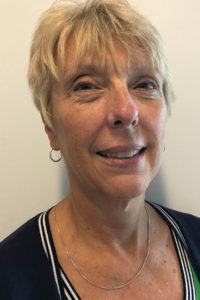
As an advanced practice nurse in the division of pulmonary medicine at The Children’s Hospital of Philadelphia, Laura Miske, MSN, is committed to illuminating the dangers facing technology-dependent patients every day. On Wednesday, Miske, chair of the session, and her co-presenters will shed light on the unique issues presented by one apparatus through the session Management of Tracheostomy: Before Placement, Before Home, and During Emergencies at 3:45 pm in room 262 of the convention center. Miske sat down with Daily News to discuss issues in educating caregivers about tracheostomies, in anticipation of her session.
→ Daily News: Over 1,500 people in the U.S. alone die, are permanently disabled, or otherwise hurt in connection with a tracheostomy annually. Why do tracheostomy tubes lead to medical emergencies and fatalities?
→ Miske: A tracheostomy tube is an artificial airway that the patient uses instead of his natural airway to breathe. The tracheostomy tube does not enable the natural movement of secretions from the airways towards the mouth, and its presence can increase the amount of secretions made by the airway lining cells. In some situations, the tracheostomy bypasses a life-threatening narrowing of the natural airway; if prompt recognition of its inadvertent displacement or blockage does not occur, patients can be harmed. In addition, many patients with a tracheostomy tube cannot replace it themselves, and once this type of emergency occurs, they may not be able to call for help—even if they normally could talk.
→ Daily News: What are some observations you’ve made about how caregivers are educated or miseducated about tracheostomy tubes?
→ Miske: The scope of education varies greatly from facility to facility. Sometimes only the basics are shown to the caregivers at home. They may not be required to demonstrate competence prior to discharge. Discharge teaching can range from a few hours in one day to a 6-8 week program. A delay in intervention or lack of knowledge regarding the correct intervention or what constitutes an emergency can mean the difference between a successful discharge or readmission and increased morbidity.
→ Daily News: Your session will address the diversity of education programs for tracheostomy management. What would you identify as the three most fundamental tenets of an effective caregiver program for tracheostomies?
→ Miske: 1. Discussion of tracheostomy, 2. Global respiratory assessment and skill practice for routine care as well as recognition of emergencies, and 3. Competency demonstration in all aspects of care.
→ Daily News: Share your vision with us: What does the development and rollout of a standardized training program for managing and responding to tracheostomy emergencies look like?
→ Miske: This really depends on the facility, type of patient, and airway anatomy. Younger and more disabled patients require skilled caregivers with a better knowledge base. Standardized programs for discharge with all components of care taught and practiced prior to a 24-72-hour independent stay prior to discharge would be the ideal. Simulation labs can be very helpful in offering practice for situations that caregivers need to know the correct interventions, but may not have the opportunity to practice on their loved one, prior to discharge. A true standardized program would have a dedicated team of educators of this information, rather than staff RTs and RNs trying to fit it into their daily workload.
→ Daily News: Your session is being presented at a time of increased focus on the identities, education, and care of caregivers. How would you recommend that the medical practitioners attending your session better support the needs of caregivers overall?
→ Miske: Medical caregivers view a tracheostomy tube as the defining step toward discharge. This may or may not be true and a tracheostomy does not always make life better for patients or family members. True education would include the pros and cons of placing vs refusing a tracheostomy tube, so including quality of life in the education decision-making process would be important. Once the tracheostomy is placed, involving the caregivers on a daily basis in decision-making and skill improvement is vital to a successful discharge. Helping to recognize patients that may benefit from a tracheostomy but are not suitable for discharge to home is also an important role of health-care providers, so that patients and family members feel supported in whatever decision they make. It is vital that caregivers understand how the placement of a tracheostomy will affect the global function of the patient and how the tracheostomy would impact their families and themselves as caregivers.
“It is vital that caregivers understand how the placement of a tracheostomy will affect the global function of the patient and how the tracheostomy would impact their families and themselves as caregivers.”
Laura Miske, MSN





